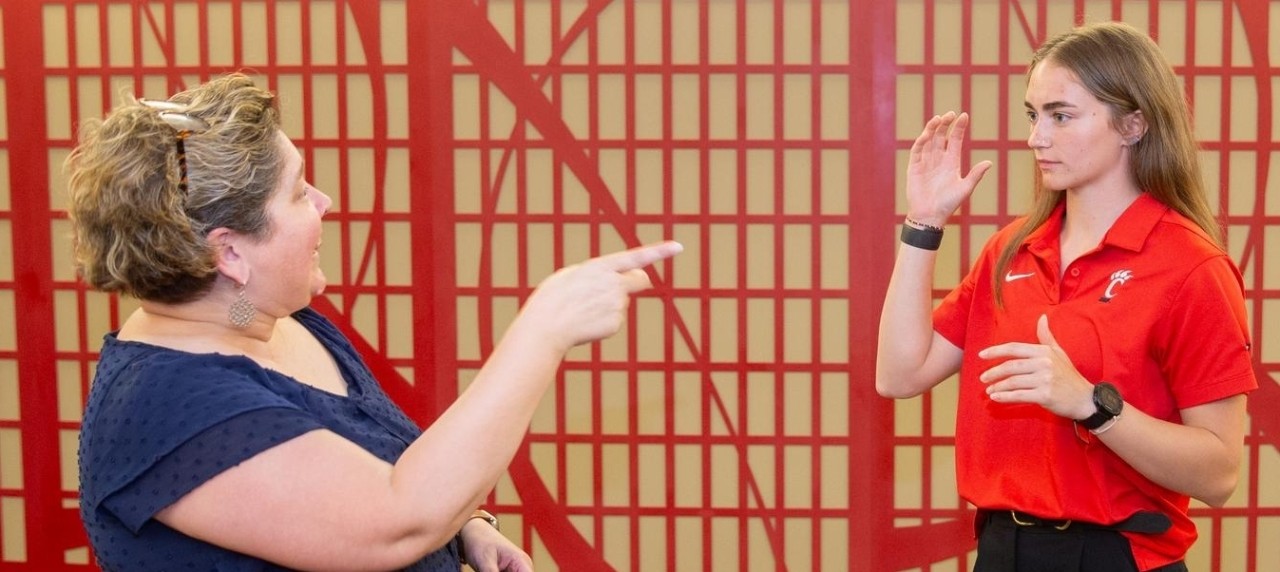
TTY (teletype) for deaf communications precursor to texting
The Deaf community was texting and video calling long before there were cell phones
Accidentally, Alexander Graham Bell invented the telephone in 1876. He was trying to develop audiology equipment to help deaf people — as both his mother and his wife were deaf.
While his invention revolutionized communications, it wasn’t until the 1960s that a deaf inventor would develop a device to facilitate communication for non-hearing persons.
The device became known first as the teletypewriter, later teletype or TTY. The machine allowed the user to connect a telephone handset into a specialized coupler that sent the message to a third party. Known as a relay system, whereby trained professionals relay the message to the recipient and vice versa.
TTY has code for words such as GA for “go ahead” just as current text messaging uses code like IDK for “I don’t know” or LOL for “laugh out loud.”

Julliette Laracuente-Huebner with her grandparents. Photo/provided
“It was text messaging just like we have now,” and as video technology evolved these relay systems included video calls, says UC American Sign Language (ASL) instructor Deanna Herbers who is deaf.
Ohio received its relay system after 1987 and was strongly advocated for by the Deaf community in and around Columbus, Ohio. Among the committee members to bring the service to the state was Jerry Huebner, grandfather to second-year UC student Juliette Laracuente-Huebner.
“It makes me feel proud to know that my family is connected to something so big and instrumental to the Deaf community,” says Laracuente-Huebner.
Today, Ohio Relay is still a free service that provides full telephone accessibility to people who are deaf, hard-of-hearing, deaf-blind and speech-disabled, but newer technologies like Sorenson, Purple and Convo are more commonly used by a spectrum of deaf and hearing people, says UC’s Herbers.
Many technologies, she says, have evolved thanks to the Deaf community.
“We had video phone calls before FaceTime started, and we used pagers before texting became popular with the hearing community.”
In a related story, "A Sixth Sense," read how Laracuente-Huebner.was reunited with a distant relative through an ASL class at UC.
Featured image at top: ASL instructor Deanna Herbers signing with UC student Julliette Laracuente-Huebner. Photo/Andrew Higley/ UC Marketing + Brand
Impact Lives Here
The University of Cincinnati is leading public urban universities into a new era of innovation and impact. Our faculty, staff and students are saving lives, changing outcomes and bending the future in our city's direction. Next Lives Here.
Related Stories
‘Somos familia’
April 26, 2023
“Somos familia” means “we are family,” and students from throughout the Latinx community are building family, finding success and continuing a legacy at UC.
TTY (teletype) for deaf communications precursor to texting
September 23, 2024
Juliette Laracuente-Huebner and another UC student, Brandon Mueller, discovered they were third cousins while taking an American Sign Language class at UC. It was also discovered that Laracuente-Huebner’s grandfather was instrumental in bringing the Ohio Relay system to the state. Ohio Relay is a service that allows deaf people to communicate with others via a third-party.
Amid shift to remote learning, UC students emerge ed tech leaders
July 10, 2020
When area schools scrambled to move instruction online due to the COVID-19 pandemic, UC education students stepped up to help teachers adapt their lesson plans online.
